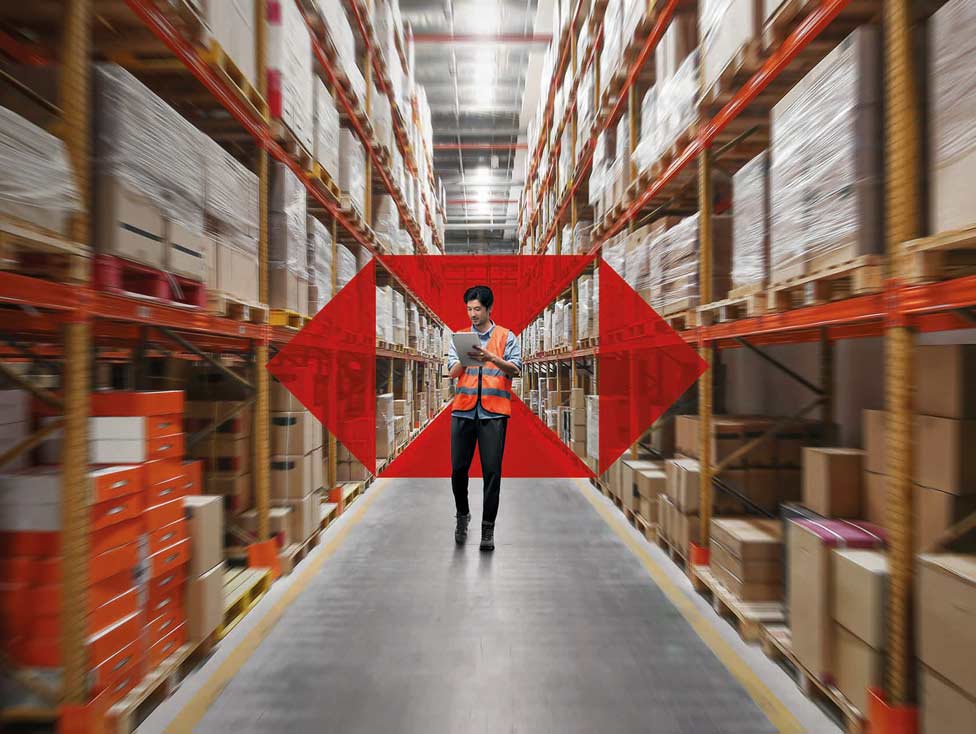- Article

- Growing my Business
- Seeking New Opportunities
Why global businesses need a Southeast Asia strategy
With vast opportunities available, Southeast Asia is fast becoming an attractive destination for growth.
The economic integration of Southeast Asia (SEA) into a robust trading bloc is a story with potential for both regional and global brands. With a population of over 680 million and a rapidly growing middle class, paired with increasing connectedness and a welcoming trade and investment environment, SEA is providing companies with fresh opportunities for reaching new customers and markets.
A dynamic growth story driven by integration
The countries of SEA have experienced the benefits of integration and are actively prioritising the further strengthening of the region. Strong demographic trends reveal the vast potential of both SEA’s markets and human capital, with the region’s middle-class rising rapidly from around 40 million in 2000 to over 190 million in 2020. 1
More broadly, consumers in Asia are expected to account for half of global consumption growth over the next decade, representing a USD10tn opportunity for businesses both within the region and those operating globally.2 Having a banking partner with regional expertise will be key to benefitting from this growth and meeting the needs of the market, especially as ecommerce expands and consumer preferences shift online.
Foreign investors and companies have already taken note of the opportunities that these trends represent. According to HSBC research, 95% of business leaders with a foothold in the region plan to expand to new SEA markets over the next two years. In addition, over half of international businesses have reported both achieving organic growth in SEA as well as developing regional supply chains.3
Trade is an area that is generating new opportunities in SEA, especially with the Regional Comprehensive Economic Partnership (RCEP), an FTA between the 10 ASEAN member states in addition to Australia, China, Japan, New Zealand and the Republic of Korea, which has entered into force for most participating nations as of March 2022.4
RCEP demonstrates how SEA is strengthening its competitiveness compared to other economic blocs as well as its attractiveness as a business destination due to greater connectivity and enabling trade policies. Companies are moving to build upon this trend, with 55% of companies planning to increase their organic growth in the region by 2023.5
Global attractiveness bolstered by growing digital capabilities
Beyond international trade, SEA as a bloc is also known for a growing digital economy, competitive wages and a skilled workforce. These advantages have made the region an attractive proposition for businesses looking to develop and test new products while expanding their Asia footprint.
Supporting this, efforts are being made to digitalise and enhance the strengths of individual countries in manufacturing, trade and innovation, as a way to raise the capabilities of the entire bloc.
Digital trade, Industry 4.06 and new economy sectors are among the areas that have been targeted in SEA’s consolidated digital strategy.7 Increasing regional connectivity is a key goal in this regard, with the Bandar Seri Begawan Roadmap8 laying out a framework for the implementation of measures such as interoperable cross-border payments within SEA as well as a digital economy integration framework.9
SEA’s digital development is also positioning it favourably amongst other trading blocs. HSBC’s Navigator research found that respondents see SEA as the most attractive region for expansion compared to both established regions such as the European Union and growing blocs such as the Union of South American Nations and African Union. This view was most common with business leaders, with around 70% consistently favouring SEA over each of the other blocs.
On the country level, respondents highlighted a variety of key advantages across SEA, including a skilled workforce in Vietnam, growing digital economy in Cambodia and a sizable market to scale quickly in Indonesia, among others.10
To capture these opportunities, companies will benefit from a financial partner that offers digitally enabled products designed to make business easier. HSBC for example has developed a single interface for overseeing payment collections as well as enabled the real-time management of overseas transactions and the movement of funds. Firms in SEA are adopting these tools to simplify their treasury functions, as was the case with a pharmaceutical company in the Philippines who worked with HSBC to centralise its accounts and processes for more efficient management of its payments, collections and liquidity positions.
As SEA continues to integrate and digitise economically, having the financial agility to respond to these developments will be increasingly important
A future of integration fuelled by investment
SEA’s growth story is far from over. The pace of development in the region has facilitated an environment where business and investment activity is able to grow.
To compete globally, SEA is pursuing enhanced connectivity and sectoral cooperation to make the region increasingly attractive for investment. For example, RCEP has made it easier for member countries, who already account for 40% of the total fund flows in ASEAN, to invest in the region.11
To further support investment, the Master Plan on ASEAN Connectivity 2025 lays out initiatives to strengthen the region’s competitiveness in a number of key fields. One such area is sustainable infrastructure, which could generate up to USD35.9bn in investment opportunities based on the project pipeline to date.12
The momentum around the region’s sustainability transition – given it is one of the world’s most susceptible regions to the effects of climate change – also represents emerging opportunities. Companies in SEA are expecting to invest 7.5% of their operating profit into sustainability initiatives over the coming year and are focusing on their supply chains to make progress in their green transformations.13
Sustainable finance is also gaining momentum in the region, with issuance of USD12.1bn in 2020, up 5.2% year-on-year. Alongside our commitment to achieve net zero in our own operations by 2030, HSBC is supporting our customers in SEA to transition to lower carbon business models through solutions that include sustainability-linked loans, green trade finance and green loans.
These opportunities are resulting in businesses investing more into their operations in the region, with over 96% of business leaders planning to significantly increase their organic growth in SEA in the coming years.14
Helping you capture SEA opportunities
SEA is undergoing a transformation to become more globally and regionally connected as well as open to trade and investment. With vast opportunities available through the region’s plans to develop its trade environment and digital economy, foreign investors will find SEA an attractive destination for growth.
HSBC is your SEA banking partner, ready to support you with services ranging from supply chain financing to cash management. Through our extensive network and presence, we can help you capture the opportunities in this vibrant and rapidly growing region.
1https://www.adb.org/sites/default/files/publication/705221/adbi-wp1267.pdf
2https://www.mckinsey.com/featured-insights/asia-pacific/beyond-income-redrawing-asias-consumer-map
3HSBC Navigator: SEA in Focus
4https://www.mti.gov.sg/Improving-Trade/Free-Trade-Agreements/RCEP#:~:text=The%20RCEP%20Agreement%20entered%20into%20force%20on%201,February%29%2C%20Myanmar%20%284%20March%29%20and%20Malaysia%20%2818%20March%29
5HSBC Navigator: SEA in Focus
6https://www.enterprisesg.gov.sg/industries/type/precision-engineering/industry-4-0
7https://asean.org/wp-content/uploads/2021/10/6.-Consolidated-Strategy-on-the-4IR-for-ASEAN.pdf
8https://asean.org/wp-content/uploads/2021/10/Bandar-Seri-Begawan-Roadmap-on-ASEAN-Digital-Transformation-Agenda_Endorsed.pdf
9https://asean.org/wp-content/uploads/2021/10/Bandar-Seri-Begawan-Roadmap-on-ASEAN-Digital-Transformation-Agenda_Endorsed.pdf
10HSBC Navigator Topline Findings, Q10, 14
11https://asean.org/wp-content/uploads/2021/09/AIR-2020-2021.pdf pg. 21
12https://connectivity.asean.org/wp-content/uploads/2020/11/07-MPAC-MTR-Executive-Summary.pdf#:~:text=The%20Master%20Plan%20on%20ASEAN%20Connectivity%20%28MPAC%29%202025%2C,competitiveness%2C%20inclusiveness%2C%20and%20a%20greater%20sense%20of%20Community
13HSBC Navigator: SEA in Focus
14https://asean.org/wp-content/uploads/2016/09/Master-Plan-on-ASEAN-Connectivity-20251.pdf
How HSBC can help
Learn about HSBC in ASEAN and find out how we have supported our customer’s growth as well as our in-market offerings.

HSBC has based this Document on information obtained from sources it believes to be reliable but which it has not independently verified. All information contained in this Document (including without limitation, information about products, terms and conditions, pricing, forecasts, market influences and HSBC policy) is subject to change from time to time without any obligation on HSBC to give notice of such change to you.
HSBC makes no guarantee, representation or warranty and accepts no responsibility or liability for the contents of this Document and/or as to its accuracy or completeness and expressly disclaims any liability whatsoever for any loss howsoever arising from or in reliance upon the whole or any part of the contents of this Document to the maximum extent permitted by law. You are responsible for making your own evaluation about the products referred to in this document. HSBC recommends that before you make any decision or take any action that might affect you or your business, you consult with suitably qualified professional advisers to obtain the appropriate financial, legal, accounting, tax or other advice.
© Copyright. The Hongkong and Shanghai Banking Corporation Limited 2022, ALL RIGHTS RESERVED. No part of this publication may be reproduced, stored in a retrieval system, or transmitted, on any form or by any means, electronic, mechanical, photocopying, recording, or otherwise, without the prior written permission of HSBC




